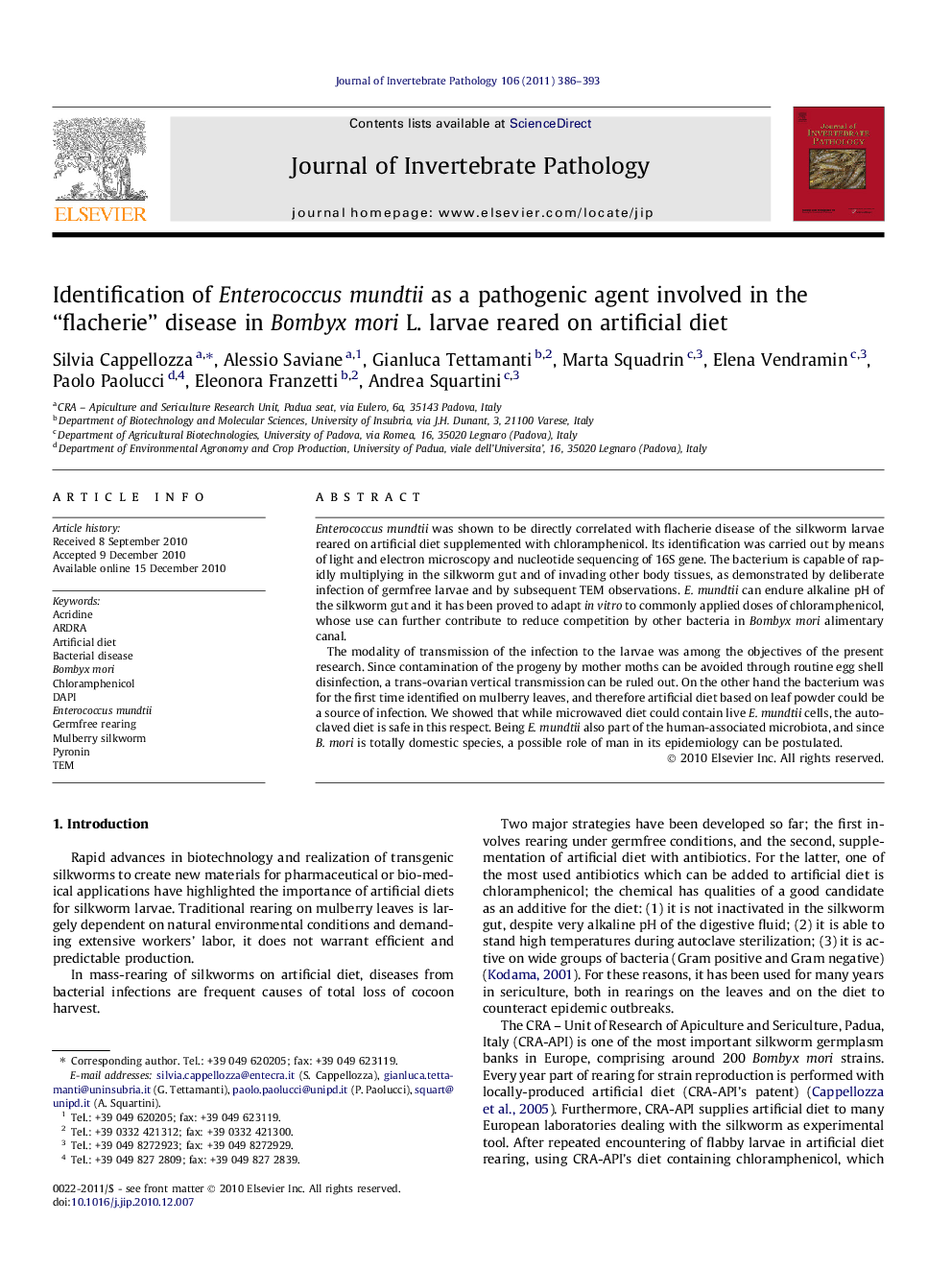| Article ID | Journal | Published Year | Pages | File Type |
|---|---|---|---|---|
| 6389870 | Journal of Invertebrate Pathology | 2011 | 8 Pages |
Enterococcus mundtii was shown to be directly correlated with flacherie disease of the silkworm larvae reared on artificial diet supplemented with chloramphenicol. Its identification was carried out by means of light and electron microscopy and nucleotide sequencing of 16S gene. The bacterium is capable of rapidly multiplying in the silkworm gut and of invading other body tissues, as demonstrated by deliberate infection of germfree larvae and by subsequent TEM observations. E. mundtii can endure alkaline pH of the silkworm gut and it has been proved to adapt in vitro to commonly applied doses of chloramphenicol, whose use can further contribute to reduce competition by other bacteria in Bombyx mori alimentary canal.The modality of transmission of the infection to the larvae was among the objectives of the present research. Since contamination of the progeny by mother moths can be avoided through routine egg shell disinfection, a trans-ovarian vertical transmission can be ruled out. On the other hand the bacterium was for the first time identified on mulberry leaves, and therefore artificial diet based on leaf powder could be a source of infection. We showed that while microwaved diet could contain live E. mundtii cells, the autoclaved diet is safe in this respect. Being E. mundtii also part of the human-associated microbiota, and since B. mori is totally domestic species, a possible role of man in its epidemiology can be postulated.
Graphical abstractDownload full-size imageResearch highlights⺠Bacterial flacherie often occurs in the silkworm reared on artificial diet. ⺠Its putative etiological agent was identified as Enterococcus mundtii. ⺠It was capable of causing the disease when administered to germfree larvae. ⺠It is tolerant to chloramphenicol and it proliferates in diet-reared larvae.
